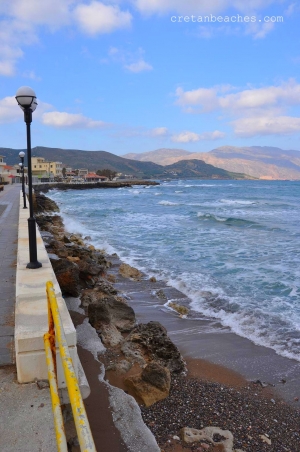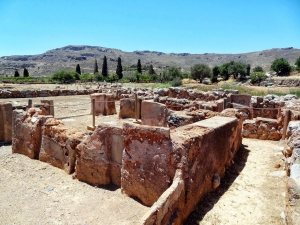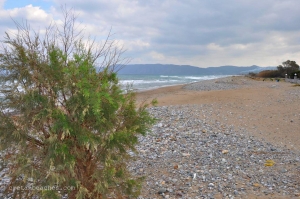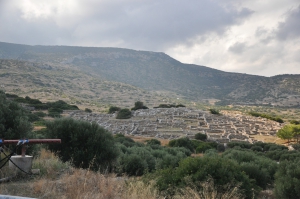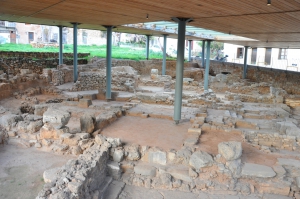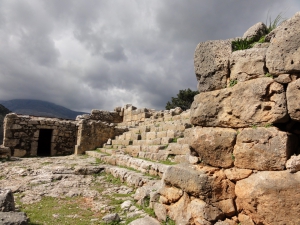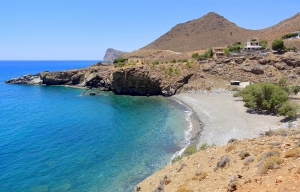The beach of Telonio (i..e Customs Office) starts east of the main pedestrian road of Kissamos and extends to the local stadium, about 1km eastern. Actually it is the westernmost part of the vast beach that starts from Kissamos and ends in Nopigia, several kilometers eastern.
The cave of the Cyclops Polyphemus is located between Sougia and Koustogerako settlements. The cave has no interesting decor, but one marble formation that reminds of a throne. The entrance is divided in two by a large rock, like the rock that was put by Odysseus in the cave of Polyphemus, the one-eyed cannibal Cyclops, before blinding him with a large wooden stick.
Η Ζάκρος βρίσκεται σε μια απομονωμένη περιοχή της Ανατολικής Κρήτης, 45km νοτιοανατολικά της Σητείας. Εδώ η επικοινωνία με την Ανατολή ήταν γρηγορότερη κατά την Μινωική Εποχή, κι έτσι, οι Μινωίτες φρόντισαν να κτίσουν εδώ το διοικητικό κέντρο της Ανατολικής Κρήτης με ένα σημαντικό λιμάνι.
The beach of Livadia starts 1km east of Kissamos, next to the town stadium, and ends at the beach of Korfalonas. It is a small, 2km long, part of the vast beach that runs from Kissamos and ends in the Cape Rodopos.
The archaeological site of Gournia is located on a hill west of Pachia Ammos, near the road connecting Agios Nikolaos to Ierapetra, 19km east of Agios Nikolaos. The city flourished in the Minoan period and is the most complete excavated Minoan town in Crete. Because of its good conservation, it was named as the "Pompeii of Crete". The excavation of Gournia was implemented by an American Archaeology Group, headed by Harriet Boyd, in 1901-1904.
The Minoan Kydonia was built at the current location of the old town of Chania. Kydonia was the third largest town of Minoan Crete. Here developed a thriving craft industry and the town became rich through sea trade, which was favored by its position. Indeed, the ancient writers mention Kydonia as the mother of the Cretan towns.
The name Lato is taken after the Dorian pronunciation of the goddess Leto, who probably was worshiped here. However, the patron of the city was the goddess of childbirth, Eileithyia, who is depicted on the coins of Lato. moverer in Lato was born the admiral of Alexander the Great, Nearchus (360 to 312 BC).





